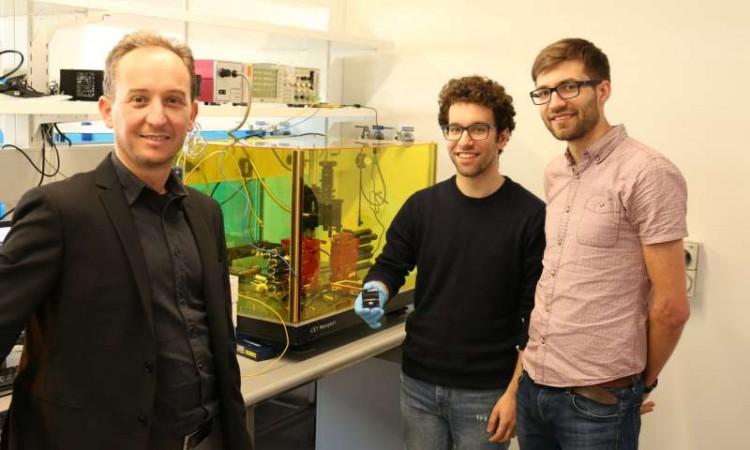
Researchers have built up a topological photonic chip to process quantum data, promising a more robust future for versatile quantum computers.
The research group, driven by RMIT University's Dr Alberto Peruzzo, has exhibited that quantum data can be encoded, prepared and exchanged at separation with topological circuits on the chip. The research is published in Science Advances.
The new findings could prompt the development of new materials, new generation PCs and profound understandings of fundamental science.
In collaboration with researchers from the Politecnico di Milano and ETH Zurich, the researchers used topological photonics—a quickly developing field that intends to examine the material science of topological phases of matter in an optical setting—to manufacture a chip with a 'beam splitter' making a quantum photonic gate of high precision.
"We anticipate that the new chip design will open the way to studying quantum effects in topological materials and to a new area of topologically robust quantum processing in integrated photonics technology," says Peruzzo, Chief Investigator at the ARC Centre of Excellence for Quantum Computation and Communication Technology (CQC2T) and Director, Quantum Photonics Laboratory, RMIT.
"Topological photonics have the advantage of not requiring strong magnetic fields, and feature intrinsically high-coherence, room-temperature operation and easy manipulation," says Peruzzo.
"These are essential requirements for the scaling-up of quantum computers."
Reproducing the notable Hong-Ou-Mandel (HOM) experiment—which takes two photons and meddles them as per the laws of quantum mechanics—the group could use the photonic chip to illustrate that topological states can quantum obstruction.
HOM impedance lies at the heart of optical quantum calculation which is exceptionally touchy to blunders. Topologically ensured states could add robustness to quantum correspondence, diminishing clamour and deformities common in quantum innovation. This is especially alluring for optical quantum data handling.
"Previous research had focussed on topological photonics using 'classical' -laser- light, which behaves as a classical wave. Here we use single photons, which behave according to quantum mechanics" says lead-author Jean-Luc Tambasco, a PhD student at RMIT.
Exhibiting high-fidelity quantum impedance is a forerunner to transmitting exact information using single photons for quantum interchanges—a fundamental part of a global quantum network.
"This work intersects the two thriving fields of quantum technology and topological insulators and can lead to the development of new materials, new generation computers and fundamental science," says Peruzzo.
This research is a part of the Photonic Quantum Processor Program at CQC2T, which is creating parallel methodologies using optical and silicon processors in the race to build up the first ever quantum calculation system.













